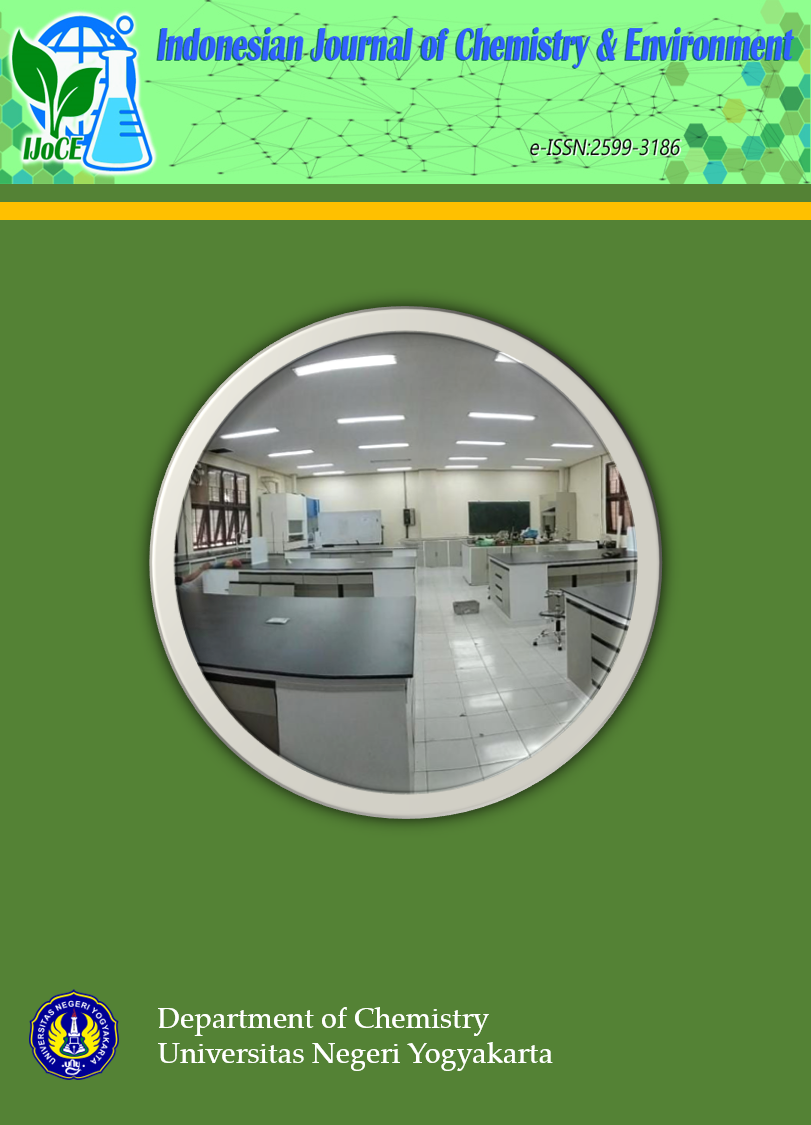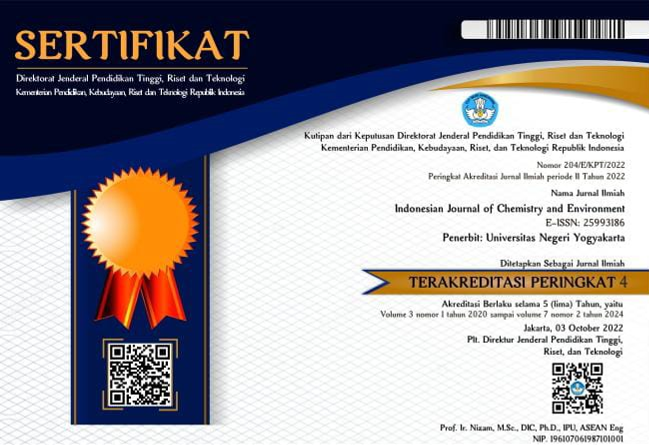Preliminary Study of Profenofos and Difenoconazole Pesticide Residue in Soil and Citrus Fruits from Citrus Farming in Serai Village Kintamani Bangli
DOI:
https://doi.org/10.21831/ijoce.v5i1.49347Abstract
The intensively use of both profenofos and difenoconazole pesticides in Citrus farming in Serai Village Kintamani Bangli may remain as residue in the soil and citrus fruits. This study was performed in order to determine the level of pesticide residues in the soil and the citrus fruits from Citrus farming in Bangli. The pesticide residue levels in the soil and citrus fruit were performed by using solid-liquid extraction (SLE) and detected by high performance liquid chromatography (HPLC). The result shows that the pesticide residue levels in soil, citrus peel and citrus flesh are 0.057±0.002, 0.112±0.013 and 0 mg/L for profenofos and 0.069±0.002, 0.180±0.013 and 0 mg/L for difenoconazole. The results indicated that the soil and citrus peel from citrus farming area in Serai Village Bangli Regency contained both pesticide residues but not the citrus flesh.
Downloads
Published
2022-07-11
How to Cite
[1]
Muderawan, I.W. et al. 2022. Preliminary Study of Profenofos and Difenoconazole Pesticide Residue in Soil and Citrus Fruits from Citrus Farming in Serai Village Kintamani Bangli. Indonesian Journal of Chemistry and Environment. 5, 1 (Jul. 2022), 1–8. DOI:https://doi.org/10.21831/ijoce.v5i1.49347.
Issue
Section
Articles
Citation Check
License
Authors who publish with this journal agree to the following terms:
- Authors retain copyright under a Creative Commons Attribution–ShareAlike License (CC BY SA) that allows others to share: copy, and redistribute the material in any medium or format, Adapt: remix, transform, and build upon the material, for any purpose, even commercially.
- Authors are able to enter into separate, additional contractual arrangements for the non-exclusive distribution of the journal's published version of the work (e.g., post it to an institutional repository or publish it in a book), with an acknowledgement of its initial publication in this journal.
- Authors are permitted and encouraged to post their work online (e.g., in institutional repositories or on their website) prior to and during the submission process, as it can lead to productive exchanges, as well as earlier and greater citation of published work.










